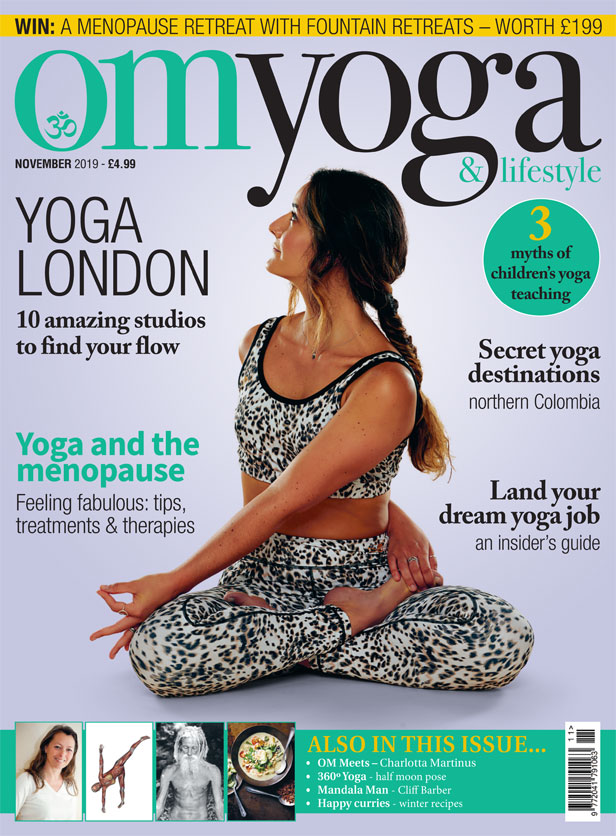
Busting the diet myth
Understand the simple nutrition basics before you worry about what milk to put in your tea, writes Adele Stickland
Nutrition and the latest diet are a constant, prominent topic within the media - social and otherwise. With the headlines screaming ‘fats are bad’, ‘you’re eating too much protein’ and ‘coconut oil is poison’, it’s no wonder so many people struggle with knowing what they ‘should’ be eating or understand the effects of what they are currently eating.
Nutrition has become sensationalised – tabloid headlines are our daily digestive intake. It is time for a common sense, down to earth and factual approach. With the misconceptions of the healthy heart diet and the population’s current high-carb predisposition, the typical diet is anything but balanced. Going back to basics and examining the ratio of your macronutrients – your carbs, proteins and fats – is your first step. Don’t worry about what milk you put in your tea, almond, cows or soya, as it is introspective and detailed. Instead, take the time to assess the bigger ‘macro’ picture of what you are eating every day.
The predominance of carbohydrates in the Western diet has coincided with an explosion in ill health, of the type that leads to a slow and painful death.
“Almost nothing that we commonly believe today about fats generally and saturated fat, in particular, appears upon close examination to be accurate,” wrote Nina Teicholz in The Big Fat Surprise. The author spent 10 years investigating and systematically reviewing every piece of research, and I consider her to be meticulous and pragmatic. The Big Fat Surprise was the book of the year in 2014 for The Times, the Wall Street Journal and the BBC Food Programme. It was described in the British Medical Journal as “a remarkable job in analysing how weak science, strong personalities, vested interests and political expediency have initiated this series of experiments.”
This article will guide you through what macros are and bust the common myths associated with them.
What are macros?
In short, macros are your fats, proteins, and carbohydrates. Each type of food is broken down by your body in a unique way. Your body will favour carbohydrates as they are easy for the body to digest and they are taken up and turned into energy in a fast and simple manner. Fats are harder for the body to digest because they are metabolised differently and take a little longer, which can have a very different effect on your body composition. These two pathways don’t work in unison; they work separately but they complement each other.
Carbohydrates come in two main forms - green and beige. Green carbs are all vegetables and fruit whilst beige carbs are pasta, rice, bread, also known as starchy carbs. Your body will use the glucose (from carbs) before it even begins to use the fat in your love handles as fuel. Vegetables contain carbs, fruit contains carbs and biscuits contain carbs, as do bread, oats, and bananas.
If you are exercising for over two hours a day, then you are probably consuming an appropriate amount of carbs. However, let’s be honest, if you are going to the gym three times a week, following the same or similar exercise routine each week and spending most of the day behind a desk, the chances are your carb intake is too high.
Comparing the macro recommendations of the most popular diets you can quickly see the staggering range of carb intake that dieticians speculate around:
- Low-fat diet: 60% carbs, 20% fats, 20% protein.
- Low-glycaemic-index diet: 40% carbs, 40% fats, 20% protein.
- Low-carb diet: 10% carbs, 60% fats, 30% protein.
The carb and fat ratios vary widely, however, the protein recommendations are generally in keeping.
Where do we start?
Your exercise level and your body type will determine how many carbs you can tolerate. If you are a tall, slim, athletic type who plays tennis every evening - then carry on, your body can cope with the regular ‘carb’ fest that most adults consume on a daily basis.
If, however, you are smaller, with a bit of belly and like to drink Sambuca every weekend whilst eating carbs for breakfast, noon and evening, then you are incrementally on a carb-crash diet, which will probably lead to exhaustion and future illness.
The way we all try to eliminate the belly is using a diet, which underestimates the long-term effects on your emotional self and physical self.
Most people diet at some stage or in some way – it is perceived that whenever the pounds have piled on you can reset your body by basically starving for a few days, weeks or months. There are three problems with this: the psychotic teenager, which is the psychological effect of dieting that comes out to play, the biological effect and hormone disruption which leads inevitability to reset failure. Finally, it doesn’t work forever: your body becomes less resistant, and the inner teenager turns into the middle age, grumpy, stressed-out ogre with low self-esteem.
The false belief that fats make you fat and that cholesterol causes heart attacks, which we have been living with for the last five decades, has become entrenched. For whatever reason, whether that is vested interest, ego or the inability to look at the bigger picture, dissident frustrated voices are being heard in both the US and UK. What began with science researchers and medical journalists, has trickled into the arena of fitness and the ‘subversive’ world of alternative medicine, but yet to hit the mainstream.
Busting macro myths
Low-fat diets are based on carbs, which are lower in calorie. The diet culture is based on the simple belief that 10g of carbs contains fewer calories than 10g of protein or 10g of fat. If you eat carbs, you are consuming fewer calories. When your body is young and resilient, it has an amazing ability to right itself using insulin. Normal cells are highly sensitive to insulin, which is one of your body’s inner guidance systems. Over a prolonged high-carb diet where your body is constantly using carbs as a source of energy, insulin becomes exhausted as your body is no longer insulin sensitive. Insulin is a storage hormone.
In addition, the diet hypothesis ignores your gorgeous body’s chemistry – carbs provide a quick energy burst and will result in becoming hungry after a few hours. Fats and proteins sustain your feeling of fullness and allow you to use ‘fatty’ deposits in your body to sustain your energy levels for longer.
An alternative to counting calories is examining your macronutrients. If you are analytical, you can use ratios on your smartphone with apps such as My Fitness Pal. Counting nutrients are where I spend my time. How many mung beans can I eat in a day?
Eat more fat to burn more fat
Simply put, your body can’t burn fat if glucose is circulating. Breast milk is 54% saturated fat, coconut oil is saturated fat and avocado is monounsaturated fat. Dietary fats do indeed have more calories and your smartphone diet app is going to go off the scale when it reads ‘duck’ on your macronutrient balance, which is why you are asked to eat lean meat, such as chicken. Apps and dietary guidelines are following the redundant theory that a healthy heart is derived from whole grains. You need dietary fat to assist the function of your heart, head and every cell in your body.
Whilst the majority of people could be looking for a quick fix to a perceived unsightly bulge or excess weight gain across the middle, there is no pill or potion that will remedy this in the long term. Low-fat diets are a thing of the past, instead, increasing your intake of good quality protein and eating more fat will ensure longer term happiness, energy and a healthier version of you.
Adele Stickland is the founder of Get Gorgeous! an online platform dedicated to inspiring and empowering women to great health and more vitality. Over 20 years, she has educated hundreds of women on the role of nutrition, movement and a healthy mindset. Gorgeous! (Panoma press £14.99) is her new book that provides women with expert guidance to change their perception of food.




